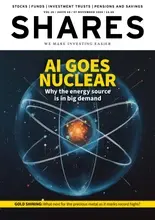02 April 2024
Kavango Resources
("Kavango" or "the Company")
BOTS - Preliminary KCB Heliborne Geophysics Interpretation
Kavango Resources plc (LSE: KAV), the Southern Africa focussed metals exploration company, is pleased to announce preliminary interpretation for geophysical survey data on its property in Botswana's Kalahari Copper Belt ("KCB"), from South Africa based New Resolution Geophysics ("NRG").
Highlights
· Helicopter-borne gravity has clearly defined a WSW-ENE trending ~9 milliGal gravity high (Kara) underlying the Kara Anticline.
· The Kara gravity high is one of two linear features in the regional gravity (Kara & Tsootsha gravity highs) possibly linked to the Okwa Complex, that may indicate the presence of basement highs defining multiple edges between two deeper basins, one to the south (Ncojane Basin) the other to the northeast (Ghanzi Basin) with a sub-basin to the north (Talismanis Basin).
· Basin margins along the KCB are considered prospective sites for Cu-Ag mineralisation.
· Preliminary interpretation of magnetic data from this survey combined with re-processed regional magnetic data and satellite images, clearly define fold hinge targets in the D'Kar Formation (DKF) that correlate with preliminary AEM targets. Fold hinges are associated with mineralisation elsewhere on the KCB, such as at Sandfire Resources' (ASX:SFR) Motheo Mine
· The updated geological interpretation is supported by recent regional mapping traverses that identified sub-cropping units within the lower D'Kar Formation, the target stratigraphic unit for mineralisation.
· Historic drilling by ENRG, from whom Kavango in 2023 acquired a 90% interest in 6 licences, confirms the existence of lower DKF in the fold structures recently mapped and noted pathfinder minerals, pyrite, sphalerite, and galena.
Ben Turney, Chief Executive Officer of Kavango Resources, commented:
"Based on its analysis of regional copper-silver deposits in the KCB, Kavango believes the configuration of basin and sub-basin structures, including basin margins and intra-basinal highs, plays a pivotal role in many sedimentary copper models.
We're quietly confident our Kalahari Copper Belt exploration programme is going to deliver.
The different exploration data sets we've gathered appears to point in the same direction, namely that our ground covers the style of large-scale system that could host significant copper-silver deposits.
We are now defining final target areas to test with ground geophysics and then drilling a little later this quarter.
This is great work from the Kavango team. Thank you all."
Preliminary Gravity, Magnetic and AEM interpretation
The NRG geophysical survey covered 2,374 line-km of helicopter heliborne Time Domain Electromagnetic ("EM"), Magnetic, and Gravity data (announced >>> 22 March 2024)
The majority of sediment hosted deposits are found in failed rift and passive margin settings, and it is generally agreed that basin-scale hydrothermal circulation is required to scavenge sufficient metals to form large deposits (Hoggard et.al. 2020). The configuration of basin and sub-basin structures, including basin margins and intra-basinal highs, plays a pivotal role in many sedimentary copper models. Faults along these boundaries frequently serve as pathways for fluids during basin formation and conduits for mineralising hydrothermal fluids during subsequent deformation and inversion (with localised dome formation). The intracratonic setting of these basins allowed the development of a hydrologically closed basinal architecture in which highly oxidized and saline, moderate-temperature basinal brines were produced that were capable of supplying reduction-controlled sulfide precipitation over very long time periods, (Hitzman et.al 2010). Sub-basins, in particular, create restricted systems conducive to concentrated fluid flow, oftentimes enhancing the metal content of potential deposits,
Heliborne gravity data offers an additional approach to delineating original basin architecture. The density contrast in the geological profile, between the dense Okwa Group Basement Complex and the less dense Kgwebe and Ghanzi Group volcano-sedimentary sequence, enables the identification of large, deeper basins and smaller restricted sub-basins as gravity lows. Basin margins are common settings for the formation of sedimentary copper deposits.
The NRG gravity data, when viewed together with the regional gravity data, appears to indicate the presence of two linear features, possibly linked to the Okwa Complex, trending NNW-SSE (Tsootsha) and WNW-ENE (Kara) that may indicate the presence of basement highs defining edges between two deeper basins to the south (Ncojane Basin) and northeast (Ghanzi Basin). During inversion basin margin structures frequently form conduits for mineralising hydrothermal fluids and form ideal locations for deposit formation, (Figure 1 & 2).
The data also indicates a possible restricted sub-basin to the north (Talismanis). Sub-basin margins are identified as priority locations for deposit formation, due to enhancement of metal content in the fluids.
Interpretation of re-processed regional government airborne magnetics together with detailed geological mapping have identified thrusts, that appear to be bounding faults for the gravity high, possibly marking original basin structures, Figure 2.
Regional folding interpreted from aeromagnetic data and geological mapping have also identified doubly plunging domal structures, at a regional and local scale. The gravity data may also be emphasising these same domal features. The domes appear to be separated by zones of more concentrated faulting, shearing and local fracturing, (Figures 2 & 3).

Figure 1, NRG Bouguer gravity images with Kavango licences overlain on regional satellite Bouguer gravity data. Exploration targets and deposits together with their respective resources (data sourced from company web sites). Most deposits and exploration targets on the KCB appear to be associated with basin and sub-basin margins and bounding structures.

Figure 2, NRG bouguer gravity images overlain on regional geology with magnetic 1VD image. Doubly plunging folds (domes) can been seen in the regional geology and locally in the gravity data within the Kara Antiform. Major thrusts appear to form bounding faults on either side of the gravity high.
Recent field mapping has identified a number of tight, upright folds corroborated in magnetic data, which present potential trap-sites for deposition of copper-silver mineralisation. These folds are typically bounded by district scale thrusts and major shears, possibly providing the necessary conduits for movement of copper-rich fluids during basin formation and subsequent closure and basin inversion (dome formation), Figures 3 & 4.
Promising targets identified as tight folds in the DKF, resembling Sandfire Resources' Motheo Mine and A4 deposits directly along strike, are evident in satellite imagery, magnetic data and correlate with interpreted AEM conductors, (Figure 5).

Figure 3, Sentinel 2B 16bit_20231020_0000000_2500mm_multispectral image over Karakubis area, clearly showing well defined fold patterns.

Figure 4, NRG RTP High Pass Filter images overlain on regional geology with magnetic 1VD. The northern and southern limbs of the Kara Antiform define the upper and middle D'Kar sequences with the lower D'Kar underlying the core of the fold. Local shears and faults cause dislocations in the stratigraphy forming potential trap sites for mineralisation.

Figure 5, LANDSAT 9 16bit_20231019_0000000_15m_multispectral image over Sandfire Motheo Mine (pink dot) & A4 (yellow dot [can't see the yellow dot]), showing similar fold patterns to the SW of the mine to those observed and mapped at Karakubis.
Preliminary AEM data also maps out the regional scale fold structures while also defining blocks with different resistivity and conductivity contrasts on either side of shears and faults.

Figure 6, NRG AEM image overlain on regional geology with aeromagnetic 1VD shading. The northern and southern limbs of the Kara Antiform can be seen closing around and plunging towards the southwest. A large shear trending SW-NE in the centre of the Antiform appears to separate blocks of contrasting resistivity and conductivity.
Inversions for the historical ENRG AEM data have just been received and inversions on the new Kavango AEM data are being processed. These will be merged and will supply a single set of uniformly sourced inversions across the new contiguous licence block, which will be interpreted for target areas for ground geophysical follow-up. Specific targets will then be picked for drilling.
Further information in respect of Kavango and its business interests is provided on the Company's website at www.kavangoresources.com and on Twitter at #KAV.
For further information please contact:
Kavango Resources plc
Ben Turney
+46 7697 406 06
First Equity (Broker)
Jason Robertson
+44 207 374 2212
Kavango Competent Person Statement
The technical information contained in this announcement pertaining to geology and exploration have been read and approved by Brett Grist BSc(Hons) FAusIMM (CP). Mr Grist is a Fellow of the Australasian Institute of Mining and Metallurgy with Chartered Professional status. Mr Grist has sufficient experience that is relevant to the exploration programmes and geology of the main styles of mineralisation and deposit types under consideration to act as a Qualified Person as defined in the 2012 Edition of the 'Australasian Code for Reporting of Exploration Results, Mineral Resources and Ore Reserves';.
The technical information contained in this announcement pertaining to geophysics have been read and approved by Mr. Jeremy S. Brett, M.Sc., P.Geo., Senior Geophysical Consultant, Jeremy S. Brett International Consulting Ltd. in Toronto, Canada. Mr. Brett is a member of the Professional Geoscientists of Ontario, the Prospectors and Developers Association of Canada, the Canadian Exploration Geophysical Society, and the Society of Economic Geologists. Mr. Brett has sufficient experience that is relevant to geophysics applied to the styles of mineralization and types of deposits under consideration to act as a Qualified Person as defined under the Canadian National Instrument 43-101, Standards of Disclosure for Mineral Projects.
References
https://doi.org/10.2113/gsecongeo.105.3.627
https://doi.org/10.1038/s41561-020-0593-2
RNS may use your IP address to confirm compliance with the terms and conditions, to analyse how you engage with the information contained in this communication, and to share such analysis on an anonymised basis with others as part of our commercial services. For further information about how RNS and the London Stock Exchange use the personal data you provide us, please see our Privacy Policy.



